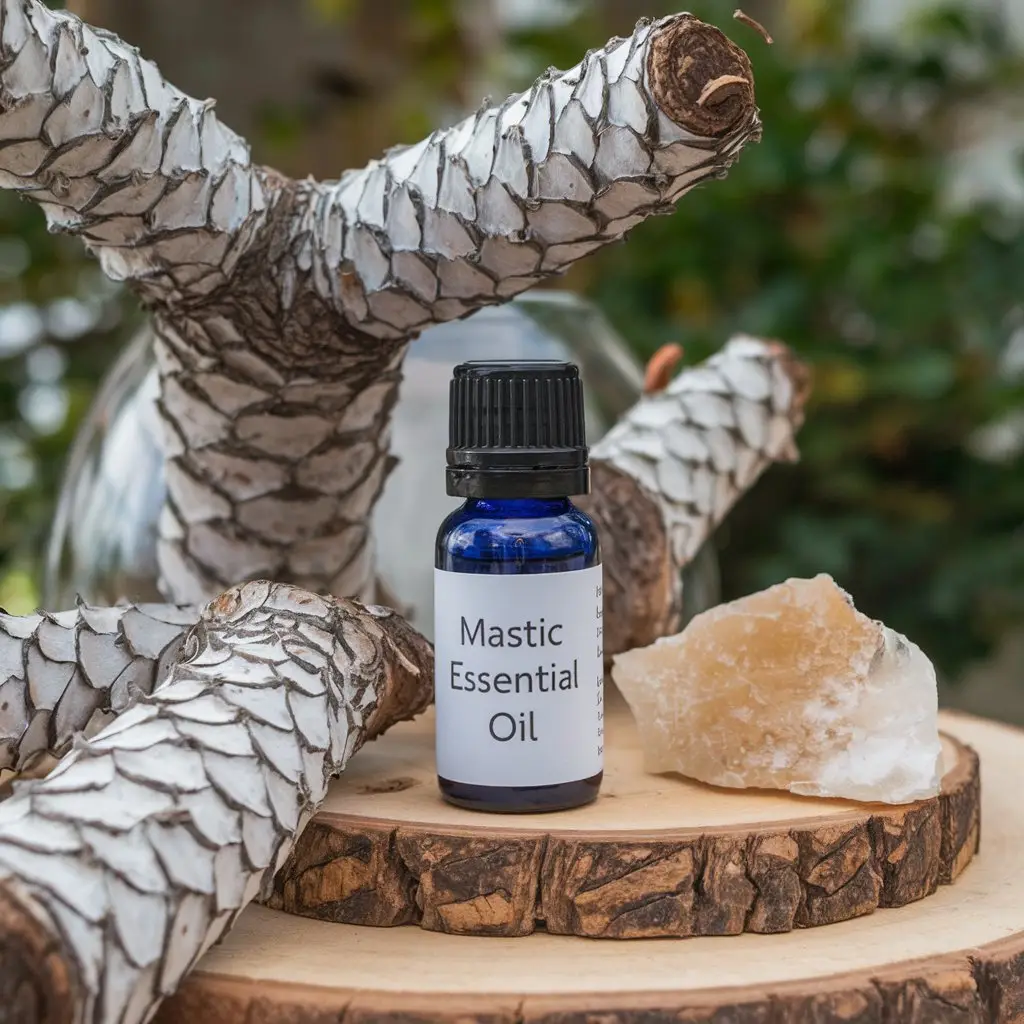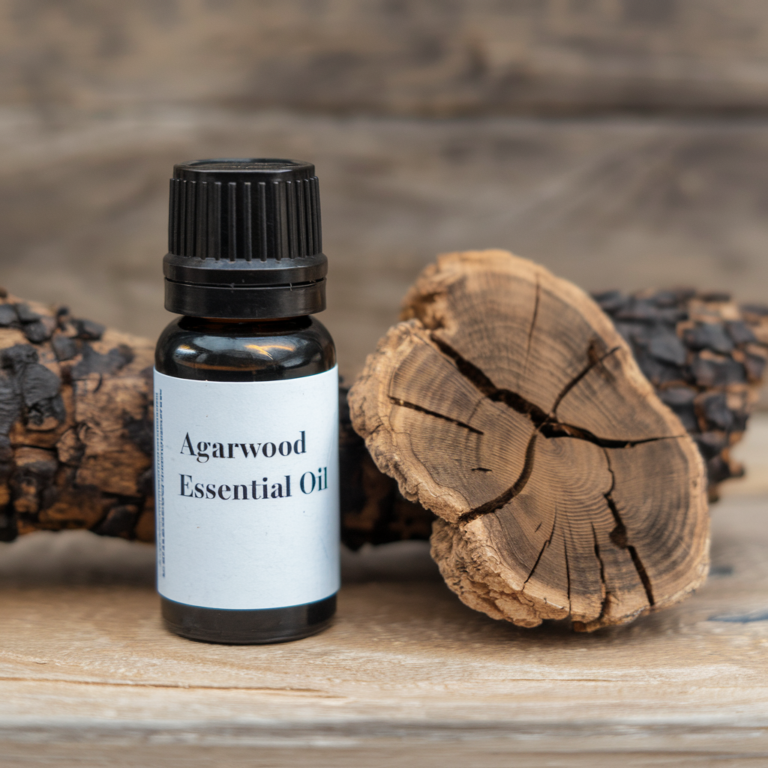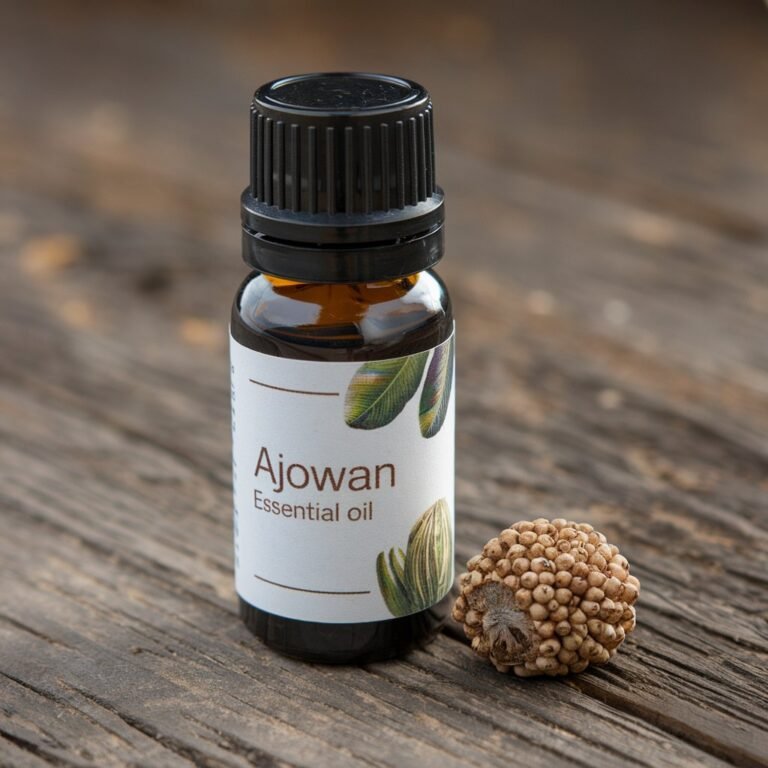Mastic Organic Essential Oil
Have you ever wondered about the unique benefits that distinguish Mastic Organic Essential Oil from other natural oils? As an essential oil enthusiast, I'm always fascinated by the stories, science, and applications behind each oil. Today, I invite you to join me in exploring the fascinating world of Mastic Organic Essential Oil, a lesser-known gem in the realm of aromatherapy that has rooted itself in ancient practices and continues to seduce contemporary wellness aficionados.
Recommended brands:
Mastic Organic Essential Oil by Amrita
Scientific Name/Botanical Name
The scientific name of the tree from which Mastic Organic Essential Oil is derived is Pistacia lentiscus. Belonging to the Anacardiaceae family, this evergreen shrub is known for its aromatic resin, which is the primary source of this remarkable essential oil.
Oil Origin

Mastic Essential Oil comes from the mastic tree, which primarily grows in the Mediterranean region. The mastic tree is most famously found on the Greek island of Chios, where the conditions are ideal for the cultivation of high-quality resin. This oil's origin plays a vital role in its distinctive qualities and cultural significance.
Extraction
The method employed in extracting mastic essential oil is steam distillation. Through this process, steam is used to separate the essential oil from the resinous secretions of the mastic tree. This method helps retain the oil's natural and therapeutic properties, making it a treasured component in holistic wellness.
Characteristics

Mastic Essential Oil is recognized for its transparency and light texture. These characteristics make it an excellent carrier oil that blends seamlessly with other essential oils, enhancing both aromatic and therapeutic blends.
Odor
The aroma of Mastic Essential Oil is distinctive—a unique blend of fresh, earthy, and woody notes with subtle hints of spice. Its uplifting fragrance has made it a favored choice for applications in aromatherapy to improve mental clarity and focus.
Consistency
This essential oil boasts a thin consistency, facilitating easy use in various applications. Its light texture pairs well with other essential oils and carrier oils, making it versatile for both topical and aromatic uses.
Country of Origin
Mastic Essential Oil is predominantly produced in Greece, particularly on the island of Chios, which is renowned for its superior quality mastic resin. This region's climate and soil conditions contribute significantly to the distinctive quality of the oil.
Evaporation
Mastic Essential Oil is categorized as a middle note, meaning its scent is moderately volatile. It evaporates at a medium rate, ensuring that the fragrance persists for a decent amount of time without overwhelming the senses.
Recommended brands:
Mastic Organic Essential Oil by Amrita
Blends Well With
Mastic Essential Oil pairs delightfully with a variety of other essential oils. Some of the best complementary oils include:
- Lemon
- Frankincense
- Lavender
- Rose
- Cypress
- Eucalyptus
- Myrtle
These combinations create a harmonious blend of scents that enhance the therapeutic efficacy of aromatherapy treatments.
Aroma
The aromatic profile of Mastic Organic Essential Oil is often described as invigorating and earthy. With a woody undertone that is punctuated by light spice, it has an emotive quality that grounds and uplifts, making it perfect for environments that necessitate focus and calmness.
Constituents
The chemical composition of Mastic Essential Oil carries a treasure trove of beneficial compounds. Key constituents include:
- Alpha-pinene
- Beta-pinene
- Myrcene
- Limonene
- Terpinen-4-ol
These constituents collectively contribute to the oil's therapeutic properties, including anti-inflammatory, antimicrobial, and antiseptic benefits.
Blending and Uses

Mastic Essential Oil is a versatile addition to any aromatherapist's repertoire. It seamlessly blends with both citrus and woody oils, making it flexible for a variety of uses. In therapeutic settings, it can be diffused to rejuvenate, massaged into the skin to relieve minor discomforts, or incorporated into skincare formulas to enhance complexion.
Safety
While Mastic Essential Oil is generally safe for use, it is paramount to follow recommended guidelines. Always conduct a patch test before topical use, particularly for those with sensitive skin. It's advised that pregnant and nursing women seek professional consultation prior to using this essential oil. As with all essential oils, ensure it is diluted with a carrier oil to minimize the risk of skin irritation.
8 Ways to Use Mastic Organic Essential Oil
- Aromatherapy: Diffuse in a room to create an atmosphere of tranquility and to bolster mental focus.
- Massage Oil: Blend with a carrier oil for an invigorating massage that helps relieve muscle tension.
- Skincare: Add a few drops to your moisturizer to refresh and rejuvenate your skin.
- Natural Cleaner: Create a DIY cleaner by mixing with water and vinegar for an effective household disinfectant.
- Breathing Aid: Use in a steam inhalation to support respiratory health and soothe congestion.
- Oral Health: Incorporate into mouthwash to promote fresh breath and oral cleanliness.
- Muscle Rub: Combine with a balm to soothe soreness from physical activity.
- Perfume: Use as a natural base in a custom fragrance blend.
Historical Uses and Cultural Significance
Since antiquity, Mastic has been esteemed for its diverse applications, ranging from its use in ancient Greece for medicinal purposes to its esteemed status in perfumery and culinary arts. Mastic resin has long been harvested as a precious commodity. In medieval times, it was used as a natural remedy and as part of religious ceremonies, symbolizing purity and healing.
Scientific Studies
Recent scientific inquiry into Mastic Essential Oil reaffirms its rich history with contemporary validation of its antimicrobial and anti-inflammatory properties. Studies highlight its potential in bolstering the immune system, aiding digestion, and offering minor pain relief. This growing body of research solidifies its standing in modern alternative medicine.
How to Incorporate into Wellness Routines

Whether you're crafting a calming evening ritual or energizing morning routine, Mastic Essential Oil can be seamlessly integrated. Consider adding a few drops to your bath for relaxation, employing it within meditation practices for focus, or using it in massage for rejuvenation and recovery after a hectic day.
Recommended brands:




